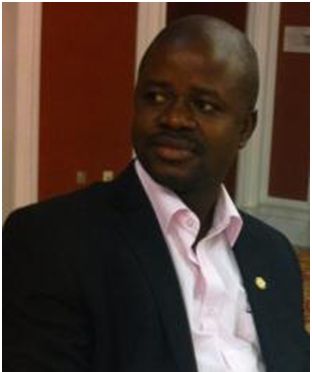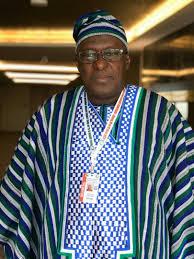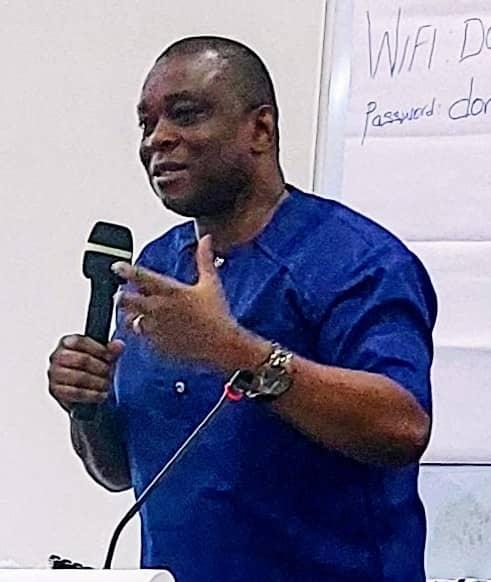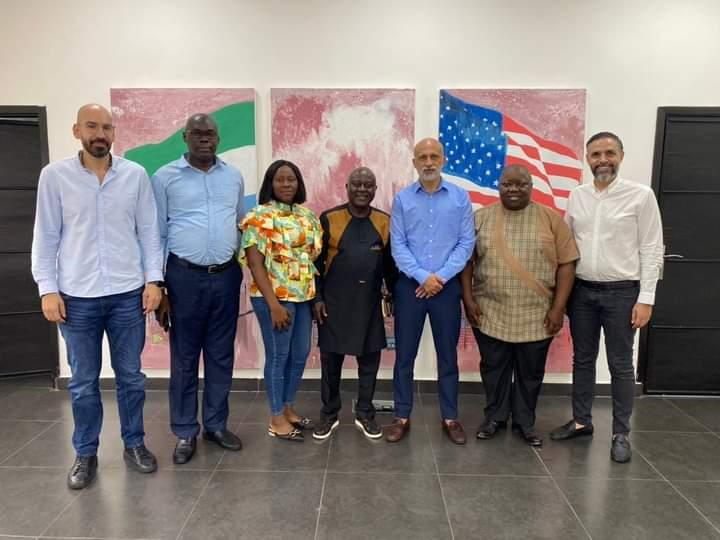Landmark Legacy of an Effective Government
First published in the last 2013 edition (issue 0021), of Sierra Update magazine, this article takes a comprehensive look at the landmark legacy of the Ernest Koroma government from the view of numerous success stories scored in the last couple of years since elected. (Photo: John Pa Baimba Sesay, author)
The assessment came at a time that the ‘prosperity agenda’, (President Koroma’s second inning blueprint for national development), has entered its second year of robust and dedicated implementation as exhibited by the clear commitment on the part of the president and his team of ministers, heads of departments and Parastatals.
With input made into the original text of this piece, one is compelled to do a closer look at what has been achieved, and what lies ahead in an attempt to create room for some sort of comparative analysis of recent past and current governments, thus forming the platform upon which the nation shall be discussing a post Koroma administration.
Political governance involves meeting promises made during electioneering periods. Seeking political votes is core to democracy but what is also vital for a political party/leader in winning elections is being able to persuade voters to accept the policies and plans for national development as may be contained in a candidate/party’s manifesto. Morally and politically, it is but of essence that political leaders do their utmost in meeting a good percent of what they may have committed themselves to fulfilling if elected. Political leaders who live up to their citizen’s expectations stand the greatest of chances of being appreciated even when they shall have retired from mainstream state governance and national politics.
This has been the case with Sierra Leone following the election of President Ernest Bai Koroma in 2007. The five years ‘Change’ trajectory that Sierra Leone took brought between the period 2007-2012 practically helped in bringing about a series of transformational developments in areas of infrastructure, agriculture, tackling corruption, lifting the country’s image in world affairs, building its economy and a host of other areas. The ‘Agenda for Change’ brought about reforms in all sectors of society and thanks to the leadership of Ernest Bai Koroma and his working government.
Take the president’s commitment to addressing corruption. There had always been an apparent lack of political will to tackle this challenge head on, in that, even when there was an institutional framework in the form of the Anti Corruption Commission, less was done by the SLPP government to ensure the commission’s success. Factually, the ACC became a tool in bringing down political opponents. That was the ACC left behind by the Kabba (h) administration. But the presidency of Ernest Bai Koroma brought a change in this area, with several corruption related offences charged independently to court by the commission and with complete prosecutorial powers on its part.
Indeed, one major area where the country’s zero tolerance on corruption has become more evident is in the political will to empower the ACC to serve its purpose, coupled with an assured government support, thus leading to a framework for case selections and prioritization developed and with areas of priorities including procurement, revenue collection, and delivery of essential public services and the judiciary. Worthy of note, also is that this government has embarked on a comprehensive range of measures to strengthen public financial management in both Central Government and Local Councils. With the launching of the Integrated Public Financial Management Reform Programme (IPFMRP), there is certainty that the country will ensure sustainable improvement in the her fiscal governance
Infrastructural development is another landmark legacy of the president. In 2007, president Koroma led Government inherited an infrastructure makeup that could be best described as being in a morbid state. Less or no attention was given to maintenance, rehabilitation or construction of roads by the previous government of Tejan Kabba (h) and his SLPP. In an attempt to address this challenge, the Government listed infrastructure development as priority area in the ‘Agenda for Change’. It then worked on rolling -out the largest road construction programme ever in the history of the country. The Government embarked on linking the country through road projects connecting cities, towns, and villages. Roads were being constructed, reconstructed and rehabilitated in every region and district, thus connecting Sierra Leoneans.
Also, as part of the country’s infrastructure drive and in addressing the challenges facing our air transport system, fixing our air transport system became a government priority. By 2007 Sierra Leone’s air travelling system was in a bad shape, given that the Lungi International Airport was in a declining state with sub-standard facilities. Three years into office, President Koroma initiated various works including the overlaying of the runway, widening of the taxi way and relocation of ground lighting system.
Sierra Leone continues to explore her potential for heavy air traffic as it is strategically located when it comes to air transport the world over especially in linking up with Latin America, Southern Africa, Europe and East Africa, Central Africa and North Africa. Again, in opening up the country to the international air market, the Government is currently working on the construction of a new airport in the Port Loko district. The economic viability of a new and modern airport could not be overemphasized, coupled with the help it will bring in job creation.
Agriculture is also another sector that will play a contributing role when discussing the successes of this Government. Prior to 2008, the country’s agricultural sector needed serious attention and an affirmative action if only Sierra Leoneans were to effectively explore all the potentials the sector has. Agriculture contributes over 45% of Sierra Leone’s Gross Domestic Product, accounts for over two-thirds of the population in terms of employment and generates about a quarter of the export income. It therefore, was ridiculous that the SLPP led Government of President Kabba (h) could only provide 1.6% budgetary allocation to the sector.
President Koroma made it his vision in making the sector an ‘engine’ for socio-economic growth and development. This was made possible through commercial agriculture and the promotion of the private sector. The ultimate goal was for the country “…to move away from subsistence to commercial agriculture, agro-processing, adding value to our agricultural products and realizing maximum benefit from the richness of our soil.” (President Koroma’s address to the Chamber of Commerce, 2009) Since then, the Government ensured an increase in budgetary allocation to the sector from a paltry 1.6% in 2007 to 10%. Government also prioritized the Smallholder Commercialization Programme (SCP) as the investment plan to kick-start the National Sustainable Agricultural Development Programme (NSADP) (2010 – 2014). The SCP has been supporting the Smallholder Farmers to move from subsistence to commercial farming – “farm for business” – and at the same time, connect them to markets.
From the provision of electricity to every district headquarter town of the country; to the introduction of a free health care scheme for pregnant women, children under five and lactating women and in opening up the country’s image in international world affairs, thus today playing a leading role in the reform of the United Nations Security Council, President Koroma will ever be remembered for these and plenty other legacies he shall be leaving.
In the health sector, the government launched the Free Health Care Initiative for pregnant women, lactating mothers and children under five in April of 2010. The result has been a massive increase in the utilization of health services and improved health care access for women and children. The number of health facilities has increased across the country. Various facilities, including maternity wards, basic emergency obstetric, etc new referral hospitals and medical stores have been established.
Expanding on the important role that Sierra Leone today plays in international world affairs, with the country’s position as Coordinator of the Committee of 10, it (Sierra Leone) has outlined a blueprint through which it will perform a global responsibility as it is in the eyes of the world; everybody is looking upon the extent to which the country would be able to galvanize international support towards the African common Position in terms of reforms in the UN.
Notwithstanding these and numerous success stories, challenges abound for us as a nation. And it was therefore, timely that the Government has set the next couple of decades leading to 2035 as a period that will see Sierra Leone becoming a middle income nation. The platform has been laid, though another development trajectory, the ‘Agenda for prosperity’
According to this document, Sierra Leone by 2035 should be a middle-income country “with 80% of the population above the poverty line.” The Agenda for Prosperity, in the words of President Koroma, builds on the successes of the ‘Agenda for Change’ and lays the foundation for Sierra Leone journey to achieving sustainable future for all her citizens beginning with the country’s goal of middle income country. There is however, “No doubt implementing the Agenda for Prosperity will require concerted efforts, collaboration and coordination among Ministries, Departments and Agencies (MDAs), especially implementing MDAs.”(President Koroma)
President Koroma’s aspiration is to speed up “the eradication of hunger and malnutrition, with a strengthened focus on women and children from conception to two years of age, to prevent the irreversible effects of stunting.” Great, superb and a commendable desire! But the urgent need for a joint national support to such a yearning cannot be overstated. Such a support should cut across the country’s political divide and should include even that of right groups and religious institutions. This is because a national development agenda should not be limited alone to government and its officials. A shared national support will in turn help sustain the landmark legacy of a performing government as in the case of the Koroma administration.
Wishes of a happy New Year and a prosperous 2014 to you.
Stay with Sierra Express Media, for your trusted place in news!
© 2014, https:. All rights reserved.







